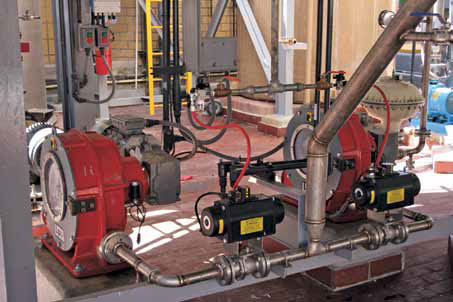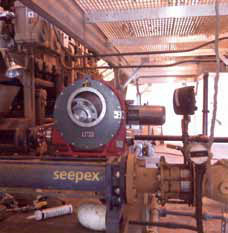The peristaltic pump explained—from advancements to maintenance
The earliest peristaltic pumps have been in existence since the 1930s. Through the years, the designs have been continuously refined for improved performance and enhanced lifetime. During the early developmental years, the greatest peristaltic pump improvements have been advancements in rubber technology. The average consumer of automobiles has also experienced this improved rubber technology with automobile tires, wiper blades, hoses, and tubes. In earlier years, these automobile components were not durable and often required repairs.

As rubber technology advanced, the need for replacements became seldom. Peristaltic pump technology has advanced similarly, but the quality and prevalence of rubber gets overlooked. If average consumers take the time to consider the reliable performance of their automobile tires, they may realize that rubber is a durable material that is used globally in millions of products that we rely on to make our lives easier and more efficient.
To further establish the significance of superior rubber technology in pumping systems, we must examine progressive cavity, centrifugal and diaphragm pumping technologies and also larger diameter peristaltic pumps. These all rely on rubber as one of the most important wear components of their pumps. The rubber hose is the main wear element and in most peristaltic pump designs is the only repair part that is replaced periodically.
Sliding Shoe vs. Roller Designs
Early designs and even some current designs of peristaltic pumps have high friction from fixed shoes that slide against the hose and limits a pump's capabilities. The sliding shoes generate friction and heat, and enormous amounts of glycerin are required to transfer the heat to the casing to help dissipate the heat generated. Many sliding shoe peristaltic pump users understand that the large quantity of glycerin used is a costly nuisance when the pump needs to be repaired. One gallon of peristaltic pump glycerin costs approximately $85 per gal. A typical 3–in. sliding shoe peristaltic pump uses about 10 gal of glycerin. Therefore, every hose failure is a loss of $850 in glycerin, not including the 10 gal of contaminated glycerin that must be disposed.
Sliding shoe design peristaltic pumps also cannot be continuously run at a high rpm. For instance, a 3–in. shoe design peristaltic pump may have a limit of 40 rpm to maintain continuous service. For a larger shoe design pump to be run at higher rpms, it must be run for two hours and then turned off and allowed to cool for one hour. Obviously, this downtime is not possible or ideal with many processes. Some require two pumps for continuous process running.
Newer and more advanced peristaltic designs use either single or double rollers, which can eliminate 80 percent of the friction caused by sliding shoe peristaltic pump designs, allowing peristaltic pumps to run at higher rpms. Roller designs require only a fraction of the glycerin used in shoe designs and have hose lives that are significantly longer. In the larger diameter peristaltic pumps, the motor size required is smaller in roller designs than in sliding shoe designs. A 3-in. roller design peristaltic pump only requires 2.2 gal of glycerin, instead of 10 gal for a sliding shoe design. At $85 per gallon, the savings on each hose change for the rolling design pump is $663 in glycerin alone.
Roller design pumps can run at higher rpms and still produce a longer hose lifetime than shoe design peristaltic pumps. In many cases the work or flow rate that a 3-in. shoe design pump produces can be accomplished by a 2.5-in. roller design peristaltic pump.
In peristaltic pumps the number one determining factor of peristaltic pump hose life is the number of times the hose is compressed. The medium being pumped can have an impact, but the number of hose compressions is the most important factor. Sliding shoe designs generate significant heat which also factors into how quickly the hose breaks down. A majority of peristaltic pumps compress the hose two times per revolution. So in almost all cases, the hose lifetime of a single roller design pump is two times longer than a shoe design or multiple-roller peristaltic pump.
For example, the costs of running a peristaltic pump on abrasive slurry for a one-year timeframe are much more economical than other pumping technology. For instance, if a 3-in. progressive cavity pump was used in the above application, the cost of rotor and stator replacement during that same year may be as much as $50,000. Regardless of the peristaltic pump type chosen, it may produce significant cost savings versus other pumps. Also, peristaltic pumps can run dry, which is often the cause of rotor and stator failure in progressive cavity pumps.

Peristaltic Pump Maintenance
Maintenance of all peristaltic pumps is relatively simple. It consists of removing a broken or damaged hose, cleaning the interior casing of the pump of contaminants and then installing a new hose with the manufacturer-required amount of glycerin. In some designs, this can be accomplished by one man in 15 to 20 minutes. In other designs, the maintenance may require two or three people, but it is still a fairly easy and uncomplicated procedure.
Also with peristaltic pumps, you do not need to remove the pump from the pipeline or take it to a repair shop. The repair work can be done at the pump installation location. With centrifugal or progressive cavity pump re-builds, the pump is almost always removed from its mounting and piping and taken to a repair shop. In general, the rebuild time with other pumps is an eight-hour shift if all the parts are in stock. With peristaltic pumps, the only required parts are a new hose and the necessary glycerin.
Peristaltic pumps do produce pulsations. Many applications require a high-quality pulsation dampener. Since peristaltic pumps are positive displacement devices, it is recommended to install a programmable pressure transmitter on the pump outlet that can shut the pump down if the pressure increases to higher-than-desired levels. Another option is to have a rupture disc installed downstream of the pump to prevent any undesirable pressure escalations if the pipeline becomes blocked.
The Varied Uses of Peristaltic Pumps
Peristaltic pumps are used in many applications—such as printing inks and colorings, mining slurries, wastewater slurries, bleach, food , beverages, titanium dioxide, sodium bromide and lime slurry pumping to name a few. Peristaltic pumps are also excellent for abrasive slurries and suction lift applications.
As with all technologies, peristaltic pumps have evolved and improved. The early designs of peristaltic pumps were limited by the shoe design or the inferior rubber technology. Today, peristaltic pumps have come a long way and provide significant reliability.
Pumps & Systems, September 2010

